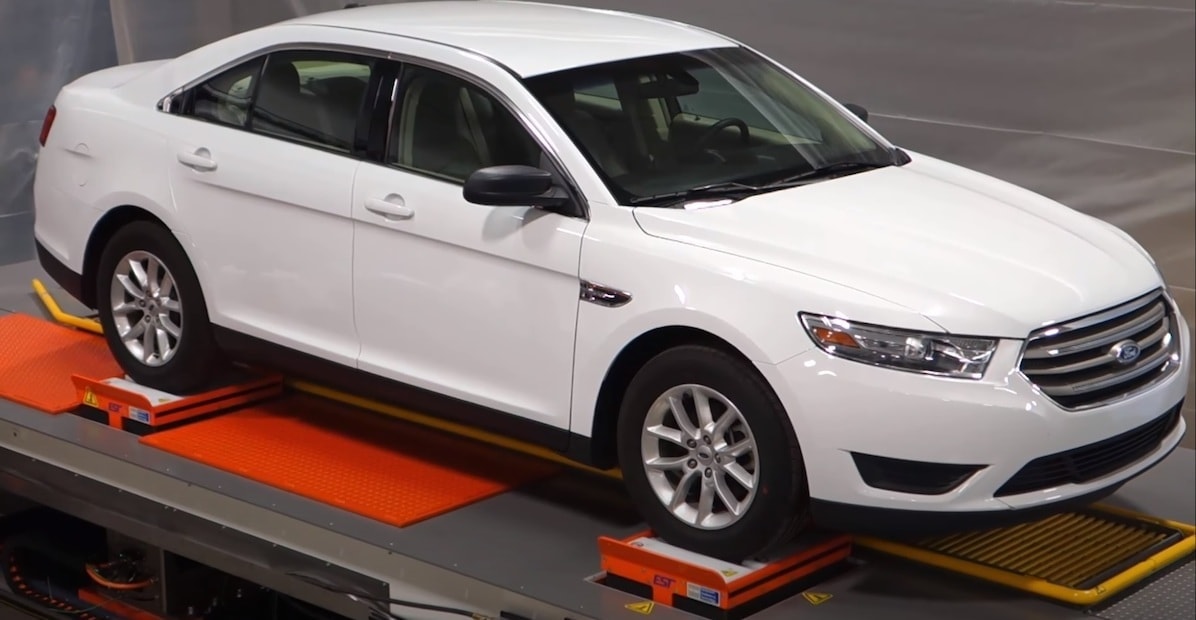Multi-Loop Control
Engineers use multi-loop setups to control multiple shakers on a single axis (usually the z-axis). Each output drives a separate shaker to more closely replicate the operational environment.
Multiple loop vibration testing is common for vehicle road simulation but applies to other environments where excitation varies at different points simultaneously.
VR Control Systems
A multi-loop test requires one VR9500 per control loop or a VR10500 with multiple loops enabled. Each VR9500 requires the necessary VibrationVIEW software and includes one method of control. The primary VR10500 controller must drive all outputs, but the system can have stacked controllers for more than 16 inputs (up to 512).
The Sine, Random, Shock, and Field Data Replication (FDR) test modes can run 2, 3, or 4 output drive loops simultaneously, but they have different control capabilities on the VR10500.
Overview
 Random
Random
Run random tests with Gaussian amplitude distribution.
- 104,000 lines of control (26,000 with the VR9500)
- Supports over 9,999 breakpoints, suitable for virtually any test specification
- Each control loop can have a unique test profile and limits
- Includes independent, magnitude and phase, magnitude-only, and equal outputs control
- “Run For” schedule level can have an independent modifier
 Field Data Replication
Field Data Replication
Playback a recorded time-history file as a control reference; output phase is syncronized.
 Sine
Sine
Run a single frequency sine tone at a defined amplitude and time.
- Each control loop uses the same profile, but the user can adjust the phase angle between the two outputs (±360 degrees)
- Control how fast the phase control loop updates in Magnitude and phase control
- Limit how fast the phase between the output channels changes
- Includes magnitude and phase, magnitude-only, and equal outputs control
 Shock/SRS
Shock/SRS
Run an industry-standard pulse or a user-defined transient pulse; output phase is synchronized.
Graphing
Graph settings include a control loop section, and the user can select which control loop demand, control, tolerance, and abort traces to plot. Any loop can be the reference for the transmissibility plot.
Four-post Configuration
A four-poster test employs multi-loop control on four shakers moving along the same axis. Engineers often run these tests on complete vehicles. A shaker is placed under each wheel, and four field recordings from each wheel are played back. Then, the recorded vibrations are played back simultaneously as if the vehicle was in motion.
Indoor testing with a 4-poster rig is comparable to outdoor test drives, so long as the test profile reflects the operational environment. A multi-control loop system ensures that the drive signal meets the demand, and field recordings help to develop more accurate profiles.
Automotive Vibration Testing
Automotive testing is critical during vehicle development and allows test engineers to characterize the effect of long-term, road-induced vibration, and shock on the performance and service life of vehicle/engine components.
Automotive Industry
Vibration Controllers

VR9500 I/O Unit
Vibration Research’s best-selling control hardware for vibration and shock testing. Scalable to 128 channels and compatible with all electrodynamic and servo-hydraulic shakers. Features include up to 200kHz sample rate and 2 outputs.
VR10500 I/O Unit
Vibration Research’s high channel count control hardware for vibration and shock testing. Scalable to 512 channels and compatible with all electrodynamic and servo-hydraulic shakers. Features include up to 256kHz sample rate and 4 outputs for multiple shakers.






